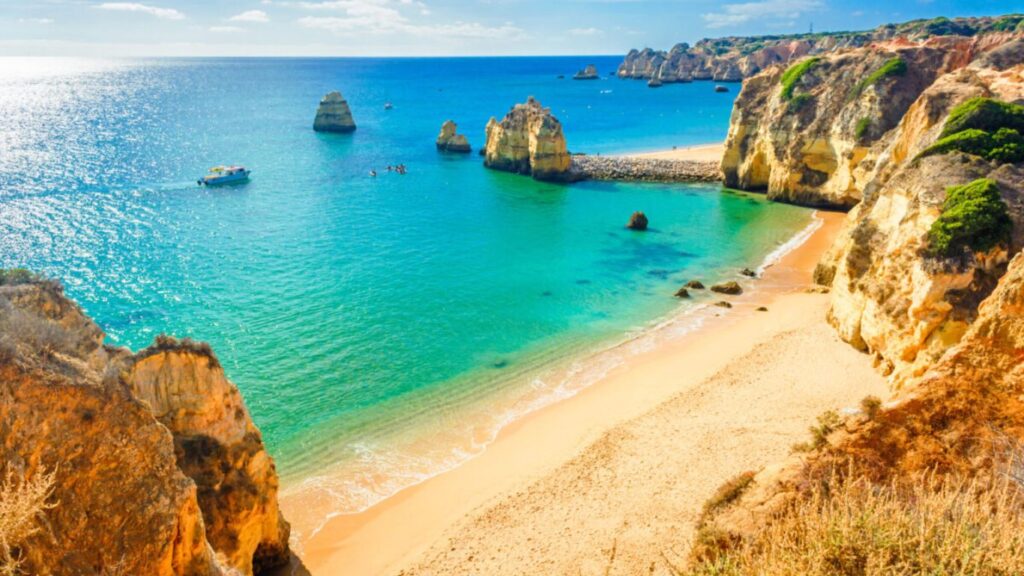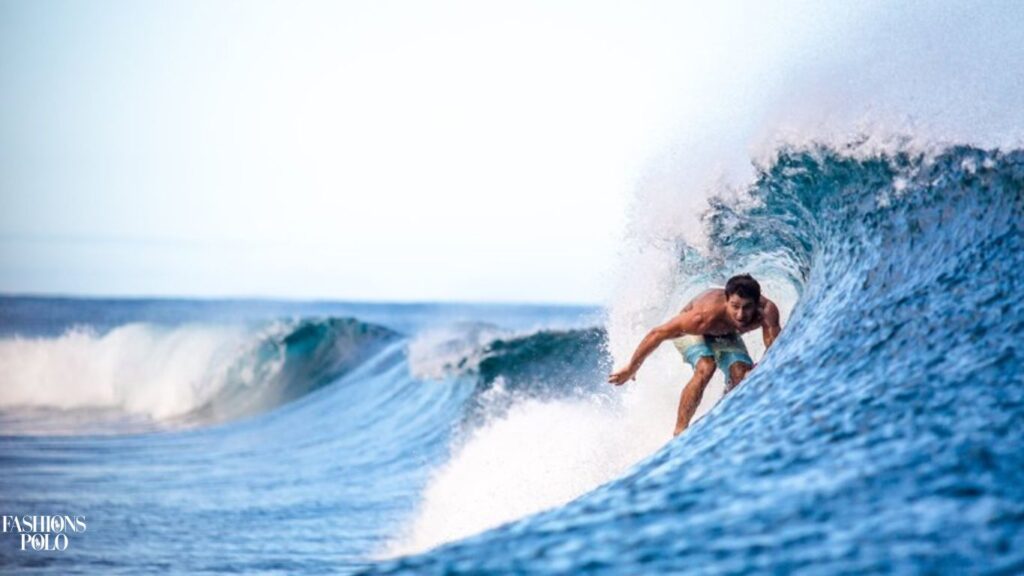Surfing is more than just a sport. It’s a lifestyle. People have been riding waves for centuries. The modern form of surfing originated in Hawaii. Surfing has evolved into a global phenomenon. It attracts millions of enthusiasts worldwide. Surfers seek the perfect wave in various locations. Coastal communities often revolve around surf culture.
Surfing offers a unique blend of athleticism and connection with nature. It requires skill, balance, and timing. The thrill of catching a wave is unparalleled. Surfing can be both relaxing and exhilarating. It’s a sport that appeals to all ages. Many surfers describe it as a spiritual experience. The ocean becomes a playground for wave riders. Surfing has inspired art, music, and fashion.
It has its own language and etiquette. The surfing community is known for its laid-back attitude. However, localism can be an issue in some popular spots. Surf tourism has become a significant industry. It contributes to the economies of many coastal regions. Surfing is now an Olympic sport, debuting in Tokyo 2020. This has further increased its global popularity.
Factors to Consider When Choosing a Surfing Destination
Selecting the right surfing destination is crucial. Wave quality is the primary consideration. Consistency of waves throughout the year matters. Swell direction and wind patterns affect wave formation. Water temperature influences the need for wetsuits. Crowd levels can impact the surfing experience.
The skill level required for a particular break is important. Accessibility of surf spots from accommodation is a factor. The presence of surf schools and rental shops helps beginners. Local surf culture and attitude towards visitors vary. Safety considerations include marine life and currents. The cost of living in the destination affects budget. Visa requirements and travel restrictions should be checked.
The quality of beaches and natural surroundings adds to the experience. Cultural attractions in the area provide off-wave activities. The availability of different types of breaks (beach, reef, point) is desirable. Seasonal weather patterns influence the best time to visit. The presence of a vibrant nightlife may be important for some. Health and medical facilities should be considered. Environmental factors like water quality are crucial.
Top 5 Countries for Surfing in 2022
A. Indonesia
Indonesia is a surfer’s paradise. The country boasts over 17,000 islands. Many of these islands offer world-class waves. Bali is the most famous surfing destination in Indonesia. Uluwatu in Bali is renowned for its perfect left-hand break. The Mentawai Islands offer some of the most consistent waves.

Nias, off Sumatra, is home to one of the world’s best right-hand waves. G-Land in Java is a legendary surf spot. Indonesia’s warm water allows for year-round surfing. The country offers waves for all skill levels. Surfing in Indonesia is relatively affordable. The local culture is welcoming to surfers. Many surf camps and resorts cater specifically to wave riders. Indonesian cuisine adds to the overall experience. The country’s biodiversity makes it appealing beyond surfing. Transportation between islands can be an adventure in itself. Some remote spots require boat trips to access. The best time to surf in Indonesia is during the dry season (April to October).
B. Costa Rica
Costa Rica is a top surfing destination in Central America. The country has coastlines on both the Pacific and Caribbean. Tamarindo is a popular spot for beginners and intermediates. Witch’s Rock offers powerful waves for experienced surfers. Pavones boasts one of the longest left breaks in the world. The Nicoya Peninsula is home to numerous surf spots.
Costa Rica’s waves are consistent throughout the year. The country is known for its “pura vida” (pure life) lifestyle. Eco-tourism and surfing go hand in hand here. Many surf camps offer yoga and wellness programs. The country’s biodiversity is a major attraction. Surfing in Costa Rica is suitable for all skill levels. The best time to surf is during the dry season (December to April).
However, waves can be found year-round. Costa Rica is relatively safe and easy to navigate. English is widely spoken in tourist areas. The country has a good infrastructure for travelers. Many beaches have nearby amenities and accommodations. Costa Rican food is delicious and healthy. The country is committed to environmental conservation.
READ THIS BLOG : Heinrich Servais: A Pioneer in 16th Century German Genealogy
C. Australia
Australia is a surfing mecca with a rich surf culture. The country has over 37,000 kilometers of coastline. Sydney’s Bondi Beach is an iconic surfing destination. The Gold Coast in Queensland is known as “Surfers Paradise”. Bell’s Beach in Victoria hosts the Rip Curl Pro competition. Margaret River in Western Australia offers powerful waves.
Byron Bay combines great surf with a laid-back vibe. Australia has waves suitable for all skill levels. The country has produced many world champion surfers. Surfing is deeply ingrained in Australian culture. The best time to surf varies depending on the location. Southern areas are better in summer, northern areas in winter. Australia has excellent surf forecasting and reporting services.
Many beaches have professional lifeguard services. Surf schools are abundant for those learning the sport. Australian surf shops offer high-quality equipment. The country’s beach lifestyle extends beyond surfing. Wildlife encounters, like surfing with dolphins, are possible. Australia’s cities offer cultural experiences between surf sessions. The country has strict environmental and marine protection laws.
D. Portugal
Portugal is Europe’s surfing hotspot. Nazaré is famous for its giant waves. Peniche hosts the MEO Rip Curl Pro Portugal event. Ericeira is Europe’s only World Surfing Reserve. The Algarve offers a mix of beach and reef breaks. Portugal’s west coast is exposed to Atlantic swells. The country offers waves for all skill levels.

Surfing is possible year-round in Portugal. Water temperatures require wetsuits most of the year. Portugal is more affordable than many European destinations. The country has a rich history and culture to explore. Portuguese cuisine, especially seafood, is excellent. The best time to surf is from autumn to spring.
Summer offers smaller waves, ideal for beginners. Portugal has good infrastructure and is easy to travel around. Many surf camps and schools cater to international visitors. The country’s wine regions add to the travel experience. Portugal is known for its friendly and welcoming people. The Azores and Madeira offer unique island surfing experiences. Portugal’s coast offers beautiful scenery beyond the waves.
E. Brazil
Brazil has a vibrant surf culture and extensive coastline. Fernando de Noronha offers pristine waves in a protected environment. Florianópolis is known as the capital of surfing in Brazil. Itacaré in Bahia combines surf with a tropical setting. Maresias in São Paulo state hosts international competitions. Brazil has produced many world-class surfers. The country offers waves for all skill levels.

Surfing is possible year-round in different regions. Brazil’s warm water is appealing to many surfers. The country’s beach culture goes beyond surfing. Brazilian food and drinks enhance the surf trip experience. Carnaval season can be an exciting time to visit. The best time to surf varies by region. Northern Brazil is better from January to July. Southern areas are better from April to October.
Brazil’s lively culture adds excitement to surf trips. Many beaches have good infrastructure for tourists. Surf schools and camps are widely available. Brazil offers affordable surfing compared to some destinations. The Amazon and other natural wonders provide off-wave attractions. Brazilian Portuguese can be a fun language to learn.
Lesser-Known Surfing Destinations
While popular spots attract crowds, hidden gems exist. Morocco offers powerful waves along its Atlantic coast. Scotland has cold but uncrowded waves. The Philippines provides tropical surf in Southeast Asia. Taiwan is emerging as a surf destination in East Asia. Nicaragua offers consistent waves at affordable prices.
Papua New Guinea has untouched surf spots. Chile’s long coastline harbors many undiscovered breaks. Ireland combines rugged beauty with excellent surf. South Korea has a growing surf scene. Mexico’s Pacific coast offers numerous lesser-known spots. Sri Lanka provides year-round surfing opportunities. New Zealand’s diverse coastline offers varied surf experiences.
Jamaica has waves for those seeking a Caribbean vibe. Madagascar is an off-the-beaten-path surf destination. The Azores offer Atlantic waves in a unique setting. Canada’s west coast has cold but quality waves. Peru has a long surf history and uncrowded spots. Japan’s surfing scene is gaining international attention. Greece offers surprising surf in the Mediterranean. The Maldives provide perfect waves in a tropical paradise.
Tips for Planning a Surfing Trip
Research your destination thoroughly before booking. Consider the best time of year for optimal surf conditions. Book accommodations close to surf spots. Check airline policies for transporting surfboards. Consider renting equipment to avoid travel hassles. Get travel insurance that covers surfing activities.
Join online surf communities for up-to-date information. Learn basic phrases in the local language. Respect local customs and surf etiquette. Pack eco-friendly surf wax and sunscreen. Bring a good first aid kit for minor injuries. Consider taking surf lessons at your destination. Plan rest days to explore local culture and sights.
Make copies of important documents like passports. Bring a waterproof camera to capture memories. Pack a variety of board shorts or wetsuits. Consider bringing your own wax comb and fin key. Research local marine life and potential hazards. Plan your budget, including unexpected expenses. Be flexible with your itinerary for optimal surf conditions.
ALSO READ THIS : The Ultimate Guide to Making Your Car Faster
Safety Guidelines and Precautions for Surfers
- Always check surf conditions before entering the water.
- Never surf alone, especially in unfamiliar locations.
- Be aware of rip currents and know how to escape them.
- Respect your limits and surf within your ability level.
- Use appropriate safety gear, including a leash.
- Be mindful of other surfers and water users.
- Learn the rules of right of way in surfing.
- Stay hydrated and protect yourself from the sun.
- Be aware of marine life and potential hazards.
- Know how to perform basic first aid.
Frequently Asked Questions
What is the best time of year to go surfing?
It depends on the location, but generally, the best time is during the destination’s surf season when swells are most consistent.
Do I need to bring my own surfboard when traveling?
Not necessarily. Many destinations offer board rentals, which can be more convenient for travelers.
Is surfing dangerous?
Like any water sport, surfing carries risks, but proper precautions and respect for the ocean can minimize dangers.
How long does it take to learn to surf?
Basic skills can be learned in a few days, but mastering surfing takes years of practice.
What fitness level is required for surfing?
A moderate level of fitness is helpful, but surfing itself will improve your strength and endurance.
Conclusion
Surfing offers a unique way to explore the world. Each destination provides its own blend of waves and culture. The sport connects people with nature in a profound way. From Indonesia’s perfect barrels to Portugal’s Atlantic swells, options abound.Emerging destinations continue to expand surfing’s global reach.
Proper planning ensures a safe and enjoyable surf trip. Respecting local communities and the environment is crucial. Surfing can be a lifelong pursuit of the perfect wave. It offers both physical challenges and spiritual rewards. Whether a beginner or pro, there’s a surf spot for everyone. The global surfing community continues to grow and evolve.
As climate change affects coastlines, surfers become environmental advocates. The future of surfing looks bright, with new technologies and destinations. Ultimately, surfing is about joy, freedom, and connection with the ocean. It’s an adventure that keeps calling surfers back to the waves.

Brook with 5 years in celebrity styling. Transforms A-list looks into wearable trends.
Expert in red carpet glamour and everyday chic for the stars.





